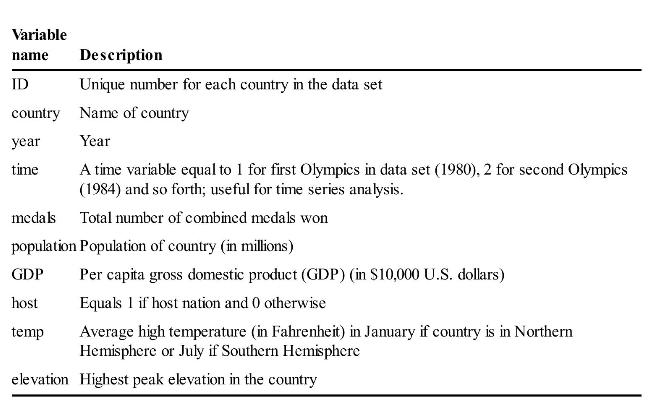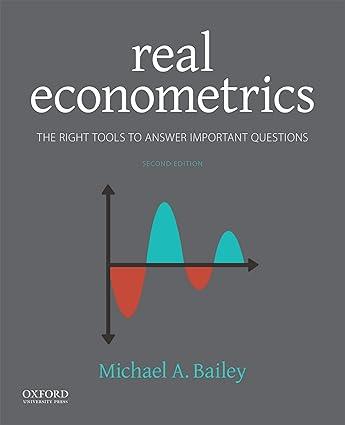Use the data in olympics_HW.dta on medals in the Winter Olympics from 1980 to 2014 to answer
Question:
Use the data in olympics_HW.dta on medals in the Winter Olympics from 1980 to 2014 to answer the following questions. Table 15.1 describes the variables.
Table 15.1:

(a) Estimate a one-way fixed effects model explaining the number of medals with population, GDP, host country, average temperature, and maximum elevation as independent variables. Use country as the unit for fixed effects. Briefly discuss the results, and explain what is going on with the coefficients on temperature and elevation.
(b) Estimate a two-way fixed effects model with population, GDP, and host country as independent variables. Use country and time as the fixed effects. Explain any differences from the results in part (a).
(c) Estimate \(\hat{ho}\) for the two-way fixed effects model. Is there evidence of autocorrelation? What are the implications of your finding?
(d) Estimate a two-way fixed effects model that has population, GDP, and host country as independent variables and accounts for autocorrelation. Discuss any differences from results in part (b). Which is a better statistical model? Why?
(e) Estimate a two-way fixed effects model with a lagged dependent variable included as a control variable. Discuss differences from the two-way fixed effects model in part (b).
(f) Is there evidence of autocorrelation in the two-way fixed effects model that includes a lagged dependent variable? Compare your answer to your answer in part (c). Explain the implications of autocorrelation in a model that includes a lagged dependent variable model.
(g) Estimate a lagged dependent variable model that also controls for autocorrelation. Compare the results to your answer in parts (d) and (e).
(h) We discussed potential bias when a fixed effects model includes a lagged dependent variable. What is an important determinant of this bias? Assess this factor for this data set.
(i) Discuss whether it is better to approach the analysis in an autocorrelation or a lagged dependent variable framework.
(j) Discuss which results are robust and which are not.
Step by Step Answer:

Real Econometrics The Right Tools To Answer Important Questions
ISBN: 9780190857462
2nd Edition
Authors: Michael Bailey





